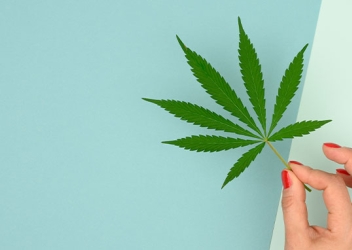Research In Action
Research In Action
Breadcrumb

Child injury from marijuana-related products is an epidemic across the United States and Canada. Children’s hospitals in Pennsylvania and Delaware now take care of the equivalent of a case every single day.
Consider this recent case from Children’s Hospital of Philadelphia (CHOP):
A healthy toddler fell and seemed “wobbly” to their parents afterward. After they did not respond to their parents’ touch and started having shaking movements of their arms and legs, the parents called an ambulance. A CT scan of the brain looked normal. They were admitted to the intensive care unit and required oxygen to help breathe. Later, testing showed that the child was intoxicated by THC (Δ-9-tetrahydrocannabinol, the main chemical in marijuana that gets users “high”). Their mother was shocked, but remembered the child playing in her purse earlier that day and offered that she keeps fruit-flavored THC gummies in her purse. The unregulated THC gummies had very high THC content.
The Center for Injury Research and Prevention (CIRP) previously reported on the rise in child injury from marijuana-related products here and here. Newly analyzed data from the Poison Control Center at CHOP shows that the number of these cases keeps rising:
- There were 332 THC cases, from Pennsylvania and Delaware, reported to Pennsylvania poison centers, among children age 6 and younger in 2023, compared to only 27 in 2019 and 4 in 2015.
- 29% of the child THC cases in 2023 had significant injury (being coded as moderate or severe effect by America's Poison Centers’ data system standards).
- Symptoms included coma, low blood pressure, diminished breathing, and seizure-like movements.
- Pennsylvania’s poison centers logged nearly 400 additional cases involving THC in children and teens age 7 to 18 in 2023.
THC Edibles Are No Treat for Children
Our data continually demonstrate that edible candy and food forms of THC pose the greatest risk to children and were implicated in 62% of our child cases in 2023. This point was emphasized in surveillance data after the full legalization of marijuana in Canada, which turned out to be a natural experiment. All of Canada legalized “recreational” use of marijuana at the same time, but Quebec province restricted sale of edibles. In turn, Quebec did not see the 7.5-fold rise in pediatric hospitalizations due to THC products that was observed in the rest of the country.
The Precautionary Principle for Protecting Children
A long history of poisoning prevention research demonstrates that there are ways to protect children from drugs, and these principles should guide commercial cannabis sales unless proven unnecessary.
- THC products should not be in candy or dessert forms, nor should they be marketed to children or adolescents.
- THC products should be in opaque child-resistant packaging that conforms to the Poison Prevention Packaging Act.
- Limitations should be placed on “per serving” and “per package” THC quantity.
- Edible THC products should be conspicuously labeled and list the THC dose.
- THC products should not be displayed nor sold where easily accessible to children.
- All THC products (there are other forms such as Δ-8-THC) should be regulated the same.
Unfortunately, the economic drivers of commercial marijuana sales often bristle at implementing safeguards while demanding marijuana-specific research that awaits completion.
We are making progress: Researchers showed that severe toxicity can be predicted when children ingest more than 1.7 mg THC per kg of body weight, which equates to about 20 mg for the average toddler. In a recent issue of Pediatrics, we learned that children suffering THC toxicity were more likely to get CT scans of the brain or be placed on ventilators in intensive care units if they were injured in states that did not have regulatory control involving legal sale of “recreational” marijuana. This makes sense as legal “recreational” THC edibles in many states are limited to 10 mg THC per serving, but in Pennsylvania our team routinely encounters individual gummies or treats with 100 to 500 mg of THC.
To further explore how policy can impact both child poisoning and adolescent use of THC, the Poison Control Center at CHOP, CIRP, and CHOP’s PolicyLab are collaborating with other public health officials, clinicians, and researchers. A multidisciplinary PolicyLab webinar on The Clinical and Policy Landscape of Marijuana and Youth can be viewed here.
If you suspect that a child has eaten a THC edible, please call the Children’s Hospital of Philadelphia (or your own regional) Poison Help Hotline at 1-800-222-1222 to be connected to a specialist. If the child is having trouble breathing, or is having a seizure, call 911.



